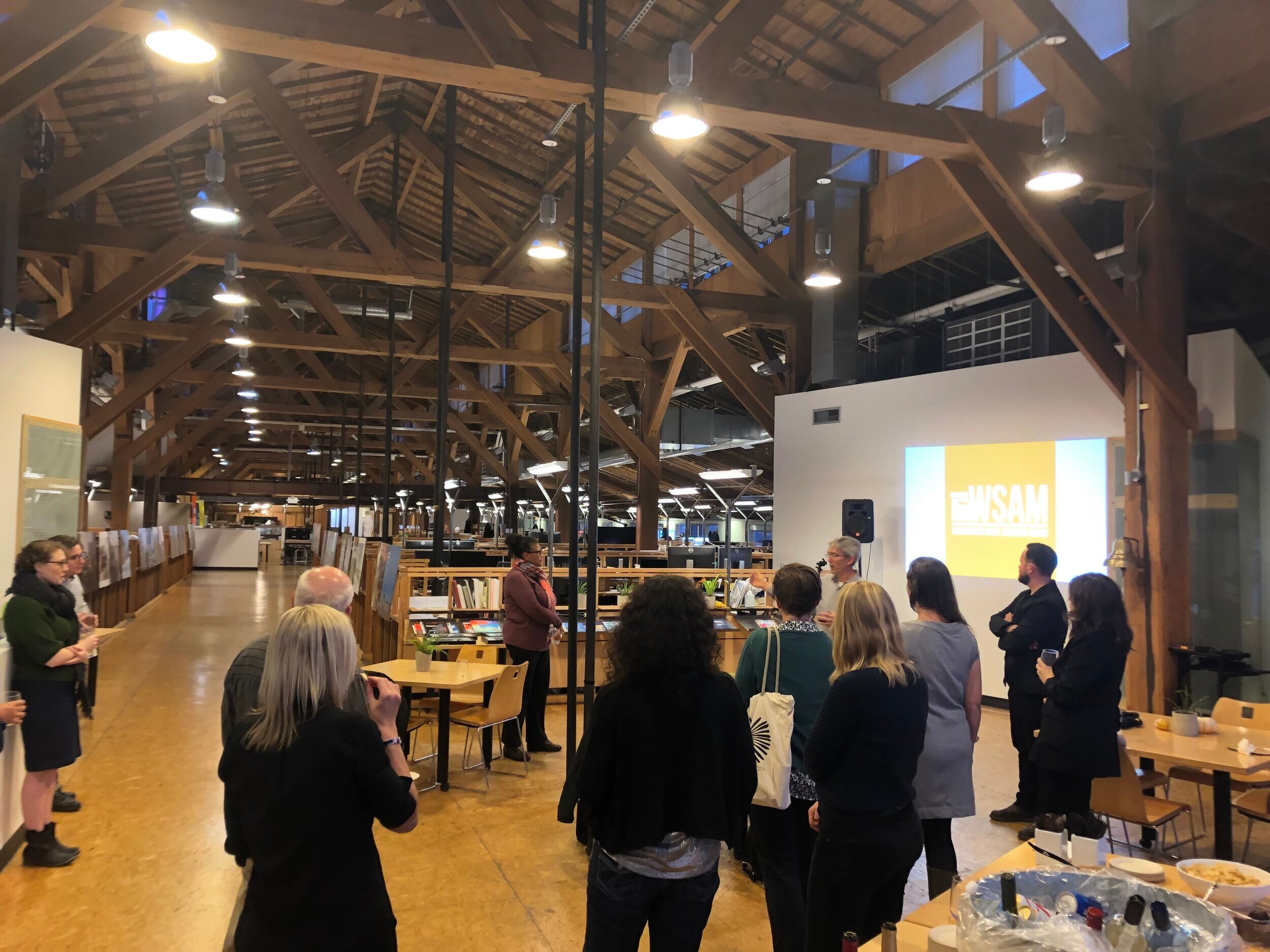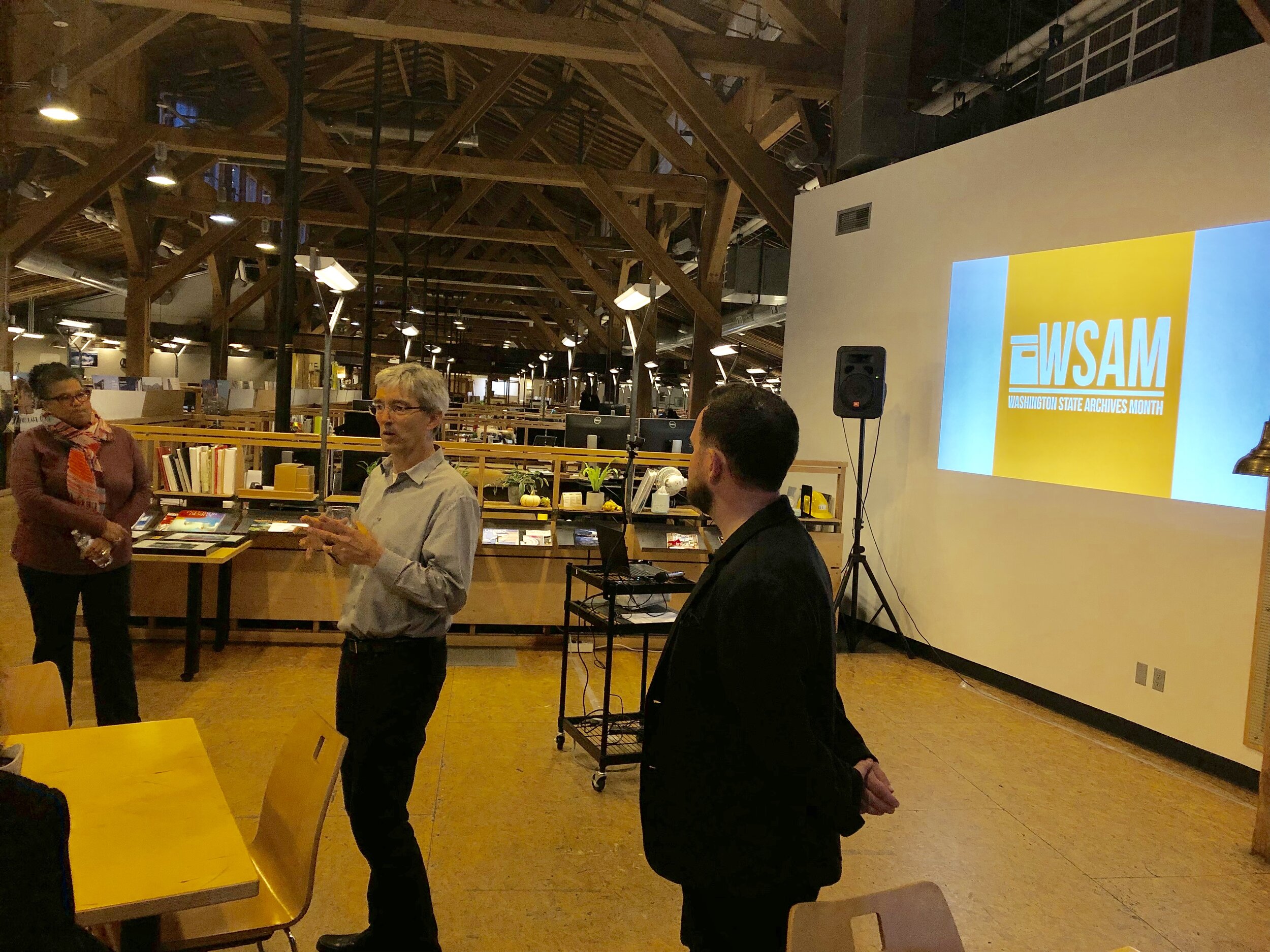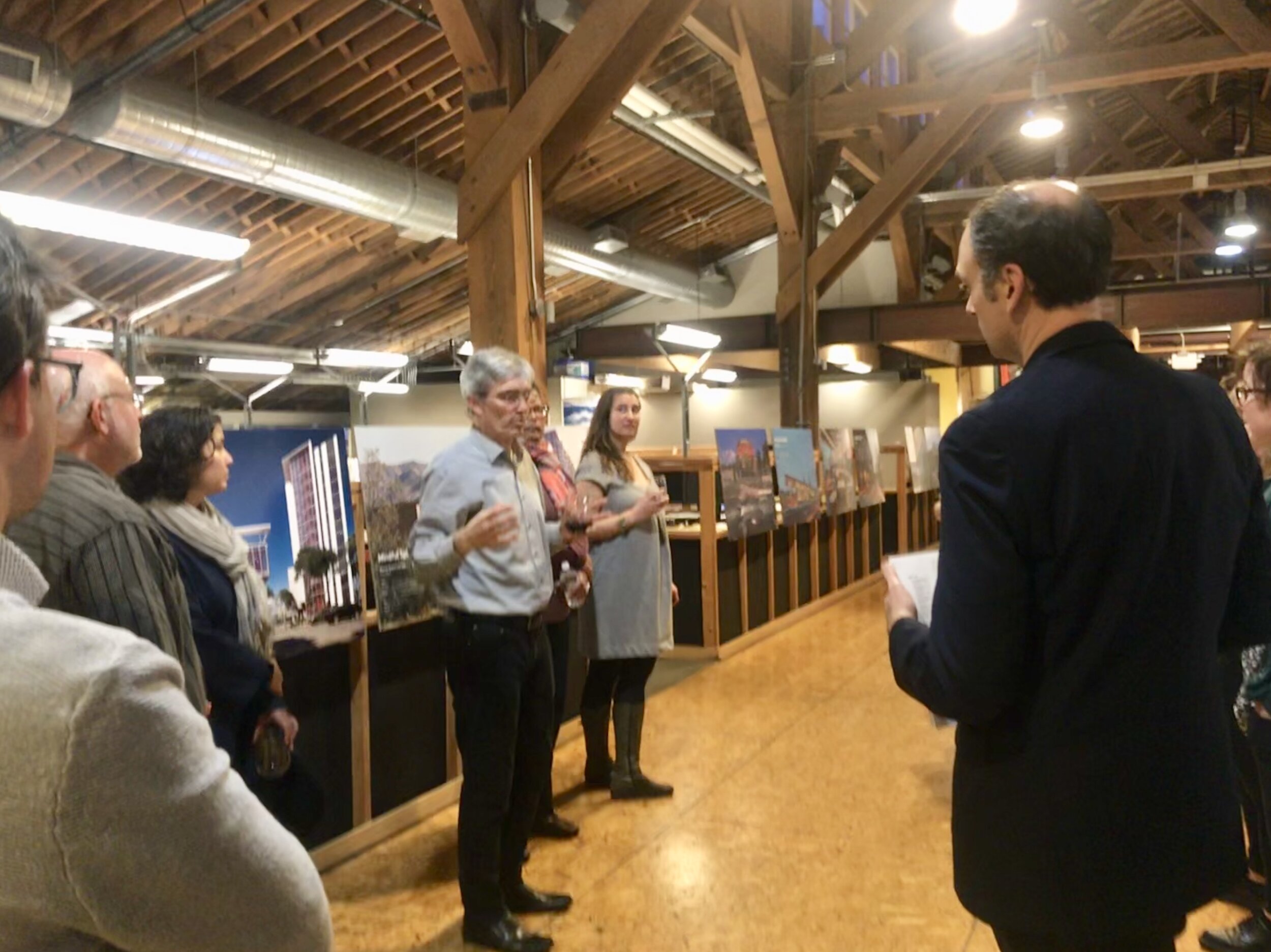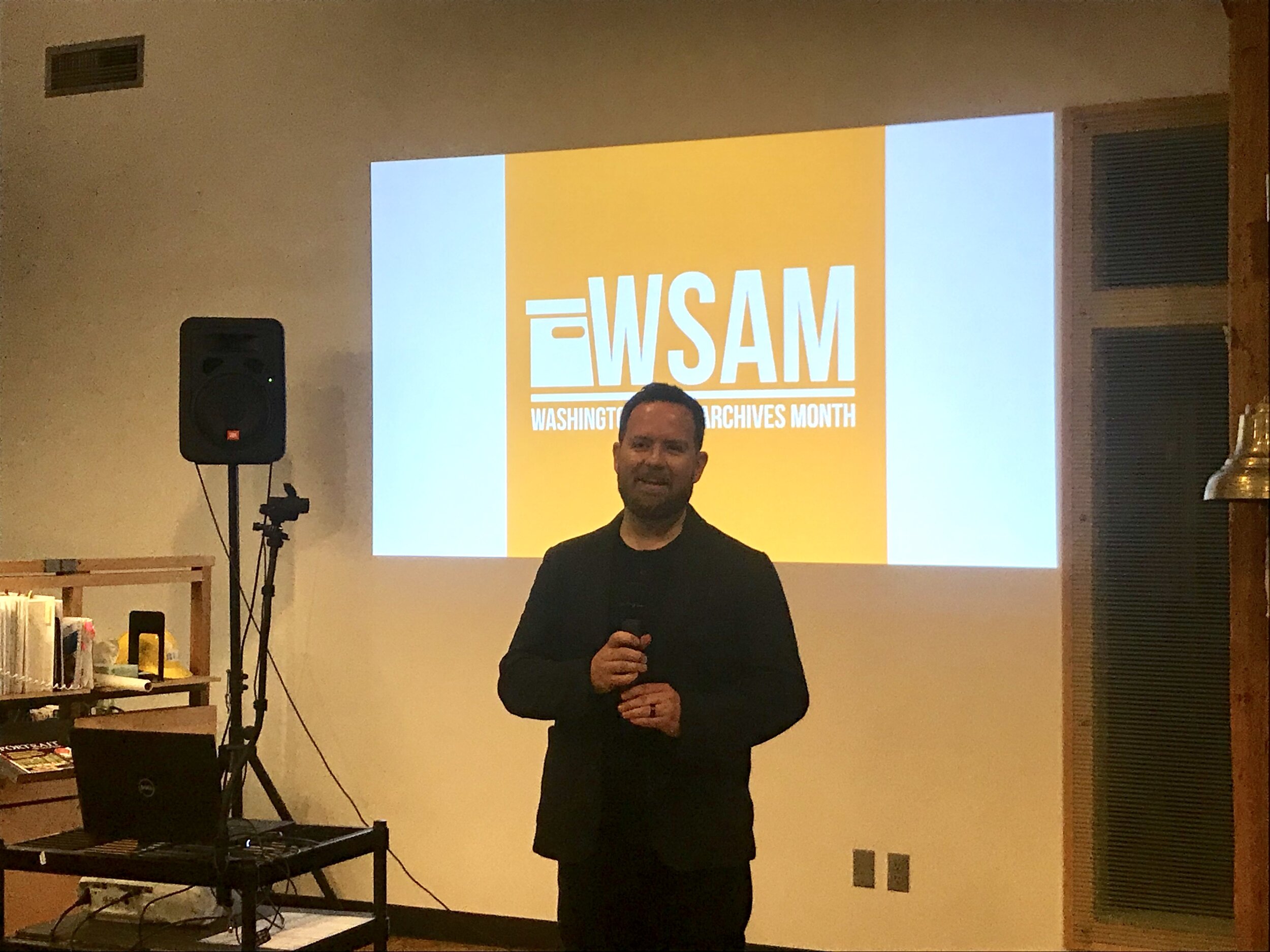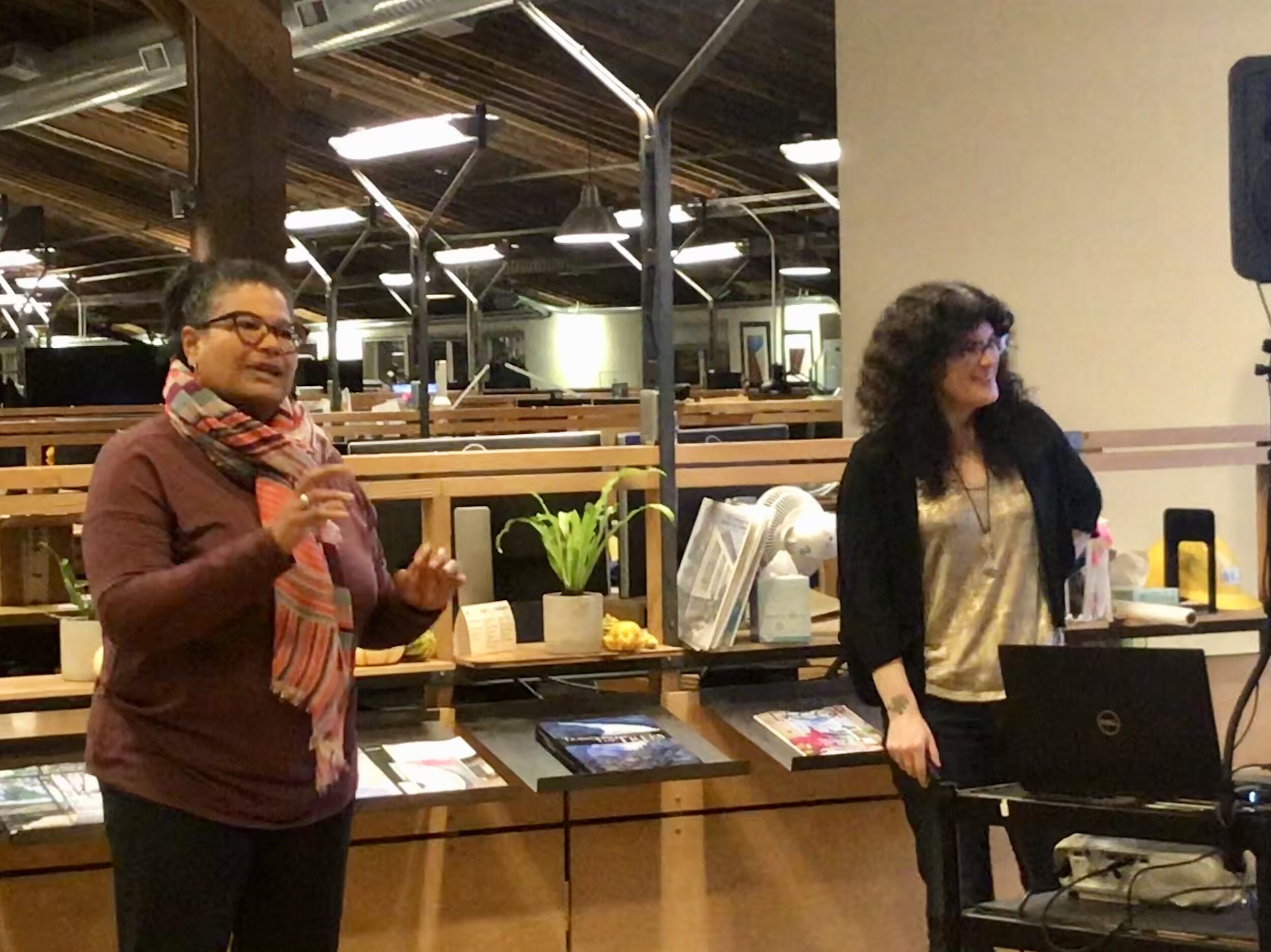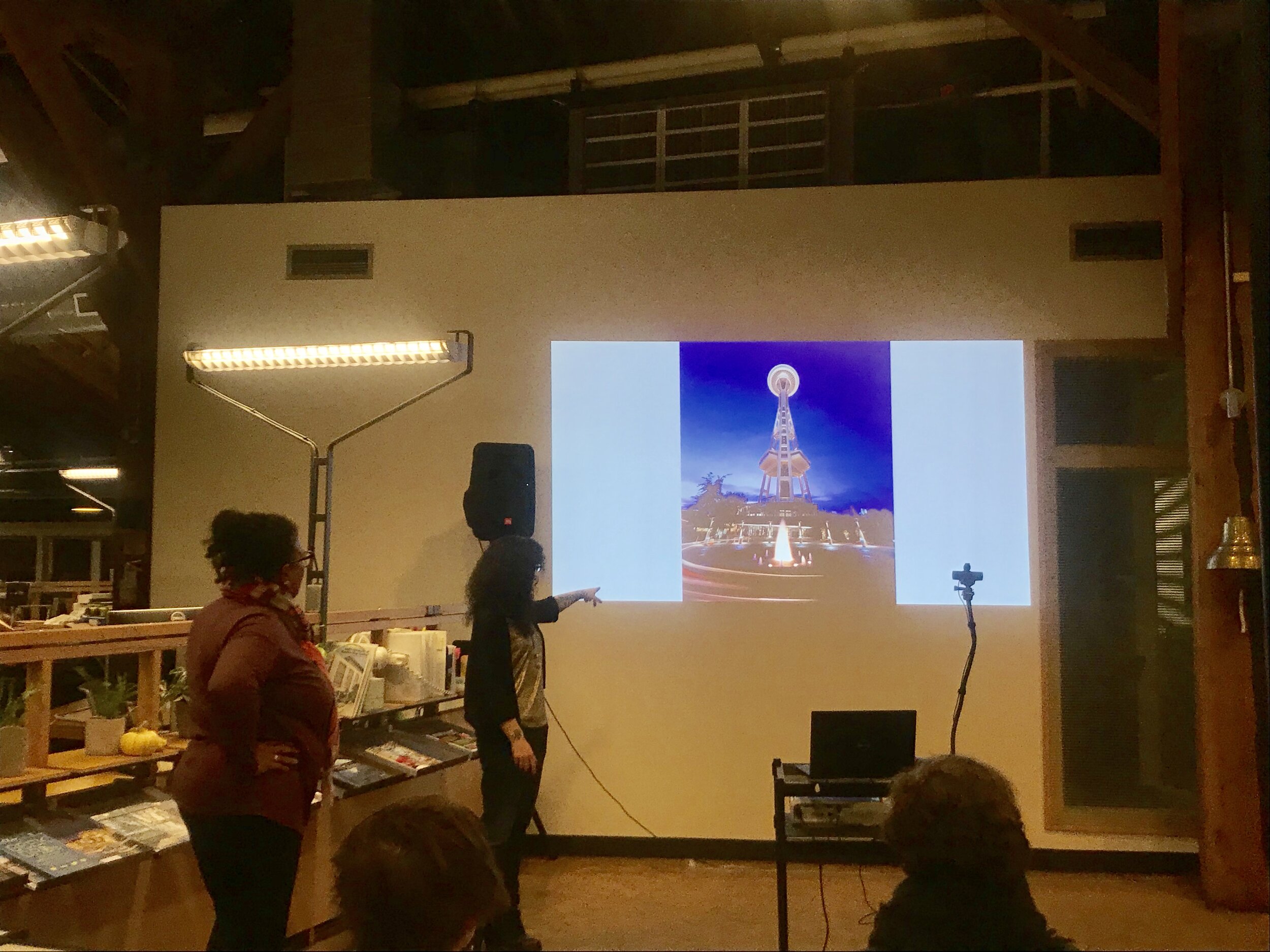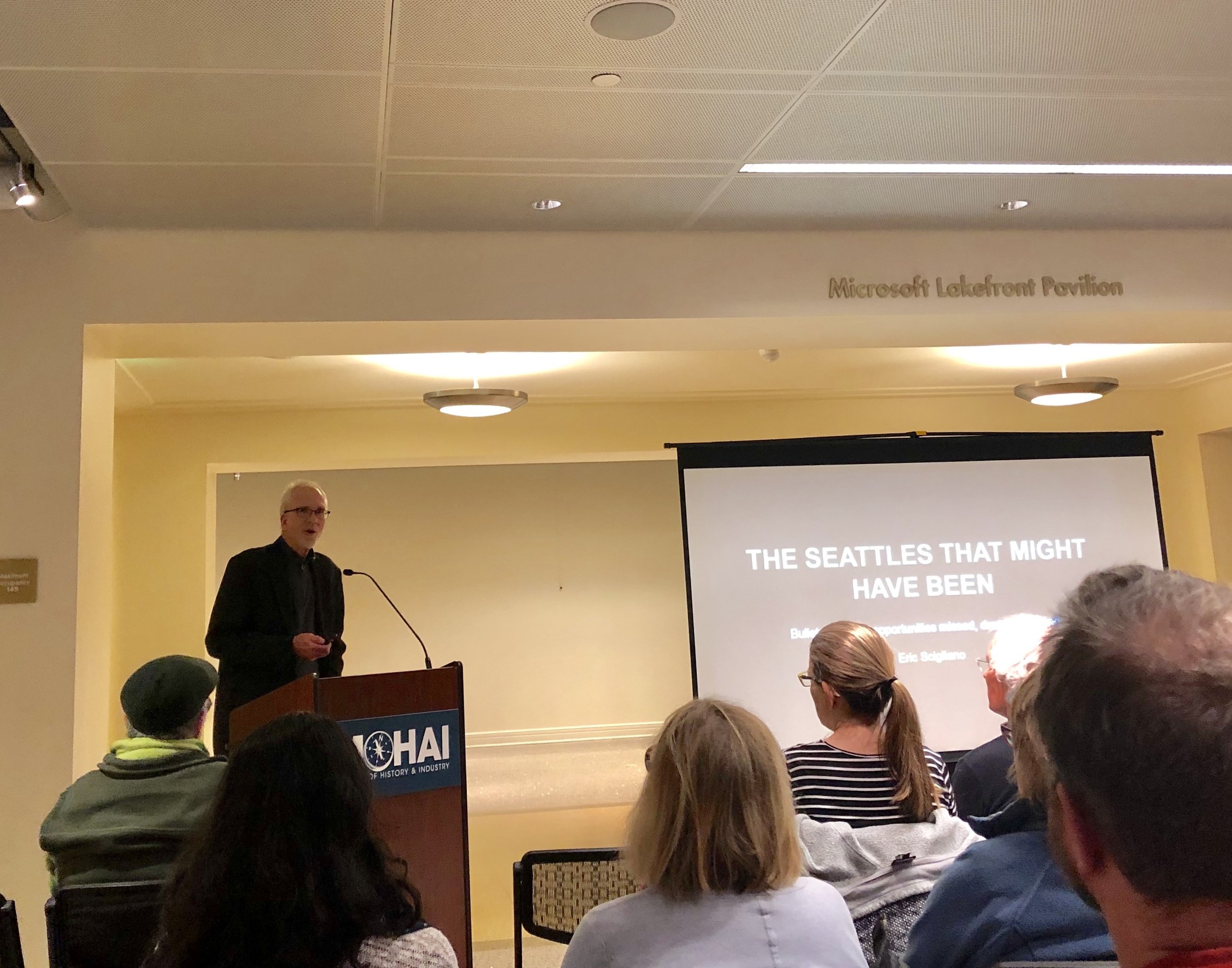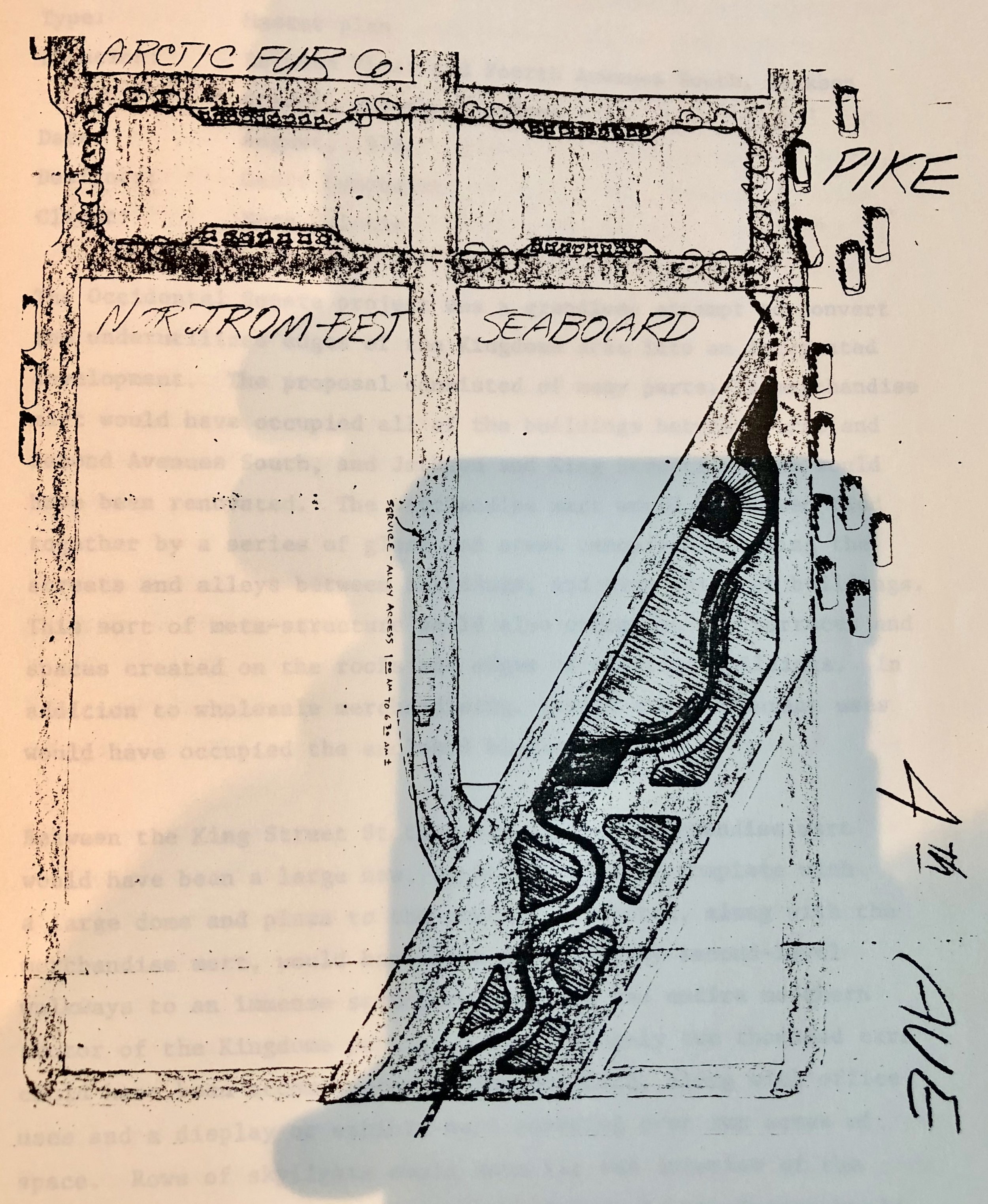Open House at Mithun Architects
On October 16th under intermittently rainy skies, visitors were welcomed to an open house at Mithun Architects as part of Washington State Archives Month (WSAM). Ryan Anthony Donaldson, Senior Consultant at The Winthrop Group and a member of the Archives Month Committee of Washington State, discussed how WSAM is an opportunity each October to engage a range of audiences about the value of the state’s historical records and heritage collections. These opportunities encompass government archives, museums, libraries, non-profits, and companies such as architecture, engineering, and construction firms.
Situated along the Seattle waterfront, Mithun’s offices are located in the Pier 56 building, originally built in 1902 by the Northern Pacific Railroad. As explained by Mithun Principal Ken Boyd during his insightful office tour, Mithun renovated the space in 2000 , paying close attention to the history of use in determining how to proceed. Windows were added to allow for more natural light with the ability to open and bring in breezes and supply ventilation naturally. He also explained the company’s plans to accommodate future growth and the flexible arrangements of the space.
Mithun Archivist Josh Myers provided further background on the building, with a presentation that outlined how the pier transformed from a maritime dock for ships to a warehouse for Trident Imports, and other tourism-focused enterprises including Ted Griffin’s Waterfront Aquarium, and briefly as a holding pen for Namu, a killer whale.
A pop-up exhibit curated by Mr. Myers included images of Pier 56, additional displays showcasing Mithun projects, as well as screening a documentary on the firm’s founder Omer Mithun.
Catherine Blake, Archives Manager, and Samantha Cross, Archivist, presented on their work with CallisonRTKL, describing how the company’s archives include photographs and other materials that are important reference sources for adaptive reuse projects. In their presentation, they outlined several examples, including the Space Needle Plaza; Nordstrom Flagship Store at 500 Pine Street (formerly Frederick & Nelson); renovation from retail use to office space at 300 Pine Street; (currently Macy’s building); and the transformation of the Fraternal Order of Eagles Auditorium building into the ACT Theatre.
Thank you to Mithun for hosting the event, the program presenters, and everyone who attended.
This article originally appeared on The Winthrop Group website.

